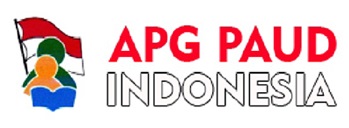SEKAR RARE SEBAGAI MEDIA PEMBELAJARAN NILAI ETIKA HINDU DI PENDIDIKAN ANAK USIA DINI
Abstract
Dharmagita is a sacred religious song that is sung during religious ceremonies. Within a specific scope, Dharmagita can be sung at the level of formal, non-formal and informal education. Because the benefits are very important for Hindus, and even used to accompany dances that are profane and sacred, children's play, and even worship to Ida Sanghyang Widhi wasa. Sekar rare as a children's song that has a cheerful character, as an accompaniment to children's games today needs to be raised from an early age to an adult level, with the aim of fostering social sensitivity, courtesy, sradha bhakti, as Hindu ethical values. In reality, it is rarely used by PAUD teachers because of the lack of references, and they are still focused on implementing a complete curriculum, so it needs to be awakened. Therefore, it is necessary to study about sekar rare as a medium for learning Hindu ethical values in PAUD. The method used in the meaning of rare sekar is qualitative descriptive. Data analysis refers to interpretive data and facts. There are several Hindu ethical values contained in Dolanan, Gending Janger, and Gending Sanghyang, namely divine values, compassion values, national values, sradha bhakti values, and social values.
References
Hasan, F. (1988). Kamus Besar Bahasa Indonesia (KBBI) Edisi ke-2. Departemen Pendidikan dan Kebudayaan. Jakarta: Balai Pustaka.
Ida Bagus Alit Arta Wiguna, K. A. T. R. D. (2020). Strategi Guru Dalam Peningkatan Mutu Pembelajaran Etika Hindu. Jurnal Penjaminan Mutu, 6(2), 210–220. https://doi.org/DOI: http://dx.doi.org/10.25078/jpm.v6i2.1449
Midastra, I. W., & Maruta, I. K. (2007). Widya Dharma Agama Hindu SMP kls 9. Ganeca Exact.
Pasek, G. (2002). Aneka Rupa Gending Bali. Penerbit paramitha Surabaya.
Tentang Standar Nasional Pendidikan Anak Usia Dini., Pub. L. No. Permendikbud, R. I. No 137 Tahun 2014. (2014).
Pudja, G., & Sadia, W. (1979). Sama Weda. Jakarta: Departemen Agama RI.
Putra, A. A., & Astini, K. Y. W. (2020). KONSEP KETUHANAN MENURUT PRESPEKTIF SAMKYA DARSANA. Vidya DarÅ› an: Jurnal Filsafat Hindu, 1(2).
Rohmat, M. (2011). Mengartikulasikan Nilai Pendidikan.
Semadi, G. N. Y. (2020). Brahma Cakra: Sebuah Tarian Kosmik. Nilacakra.
Suarka, I. N. (2003). Hakekat dan Jenis-Jenis Dharmagita serta Peranannya dalam Kehidupan Masyarakat Bali. In Naskah Seminar Dharmagita, 1(1).
Sudarsana, I. K., & Arwani, G. (2018). Internalisasi Pendidikan Karakter Melalui Pelaksanaan Dharmagita Pada Sekaa Teruna. … Jurnal Ilmu Agama.
Sugimawa, I. W. (2009). Materi Pokok Dharmagita. Direktorat Jenderal Bimbingan Masyarakat Hindu.
Sukertiasih, L., Wirani, I. A. S., & Martha, I. N. (2015). SESELEH KAWIGUNAN (FUNGSI) LAN SUKSMAN (MAKNA) GENDING RARE RING BUKU EDISI GENDING-GENDING BALI (SEKAR RARE) DRUWEN DINAS PENDIDIKAN KABUPATEN BULELENG WARSA 2003. Jurnal Pendidikan Bahasa Bali Undiksha, 2(1).
Wiasti, N. K. (2021). Bahan ajar Dharmagita. IAHN Gde Pudja Mataram.
Wiguna, I. B. A. A., & Ekaningtyas, N. L. D. (2021). STRATEGI ORANG TUA DALAM MENDAMPINGI ANAK USIA DINI BELAJAR DARING DI RUMAH. Pratama Widya: Jurnal Pendidikan Anak Usia Dini, 6(1), 86–95.

This work is licensed under a Creative Commons Attribution-ShareAlike 4.0 International License.
Authors who publish with this journal agree to the following terms:
- Authors retain copyright and grant the journal right of first publication with the work simultaneously licensed under a Creative Commons Attribution-ShareAlike 4.0 International License that allows others to share the work with an acknowledgement of the works authorship and initial publication in this journal.
- Authors are able to enter into separate, additional contractual arrangements for the non-exclusive distribution of the journals published version of the work (e.g., post it to an institutional repository or publish it in a book), with an acknowledgement of its initial publication in this journal.
- Authors are permitted and encouraged to post their work online (e.g., in institutional repositories or on their website) prior to and during the submission process, as it can lead to productive exchanges, as well as earlier and greater citation of published work (See The Effect of Open Access).











.png)














